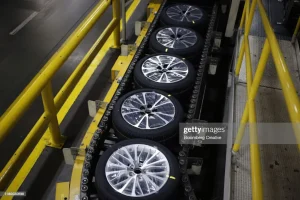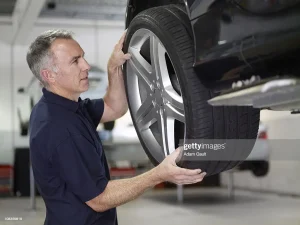In the pursuit of a smooth and enjoyable driving experience, tire manufacturers have developed innovative technologies to reduce road noise and enhance cabin comfort. Noise-reducing tire technology aims to minimize the unpleasant sounds generated by tire-road interaction, resulting in a quieter ride. In this article, we will delve into the concept of noise-reducing tire technology, explore its key features and benefits, and examine some of the advanced technologies employed by tire manufacturers to achieve a quieter and more serene driving environment.
Understanding Noise-Reducing Tire Technology:
Noise-reducing tire technology focuses on reducing three primary types of noise generated by tires:
Tread Pattern Noise: Tread pattern noise is caused by the interaction of the tire’s tread blocks with the road surface. As the tire rolls, the tread pattern creates vibrations that produce audible noise.
Cavity Noise: Cavity noise is generated by the resonance within the tire’s air cavity as it interacts with the road surface. This type of noise can be particularly noticeable at higher speeds.
Air Induced Noise: Air induced noise, also known as aerodynamic noise, is caused by the airflow around the tire and wheel assembly. It occurs when the air passing through the tire’s tread pattern generates noise.
Key Features and Benefits:
Noise-reducing tire technology incorporates various features and design elements to mitigate the noise generated during driving. Here are some key features and benefits of noise-reducing tires:
Optimized Tread Patterns: Tire manufacturers carefully design tread patterns to minimize noise generation. These patterns include unique block shapes, pitch sequencing, and siping techniques that help reduce tread pattern noise and provide a quieter ride.
Innovative Tread Compounds: Noise-reducing tires often feature advanced rubber compounds that help absorb vibrations and reduce noise. These compounds are formulated to enhance flexibility and resilience, resulting in improved noise reduction and overall comfort.
Noise-Blocking Structures: Some noise-reducing tires incorporate additional noise-blocking structures, such as foam liners or sound-absorbing materials within the tire’s construction. These structures help dampen vibrations and reduce noise transmission, resulting in a quieter cabin environment.
Enhanced Tread Profiles: Tire manufacturers optimize the tread profiles of noise-reducing tires to minimize cavity noise. By strategically modifying the shape and depth of the tread, they can reduce resonance within the tire’s air cavity and mitigate noise.
Advanced Noise-Reducing Technologies:
Tire manufacturers employ various advanced technologies to achieve effective noise reduction. Some notable technologies include:
Variable Pitch Tread Design: Variable pitch tread design involves incorporating different tread block sizes and shapes with varying pitch sequencing. This technology disrupts the sound frequencies generated by the tire, reducing overall noise levels.
Noise-Optimized Groove Shapes: Tire manufacturers utilize specialized groove shapes, such as V-shaped or curved grooves, to control the flow of air and reduce aerodynamic noise. These groove designs minimize the turbulence generated by the tire and contribute to a quieter ride.
Foam or Silencing Materials: Some noise-reducing tires incorporate foam or sound-absorbing materials within the tire’s construction. These materials help dampen vibrations and reduce noise transmission, resulting in a more serene driving experience.
Advanced Cavity Resonance Simulation: Tire manufacturers utilize advanced computer simulation techniques to analyze and optimize the tire’s cavity resonance characteristics. By fine-tuning the tire’s structural design, they can minimize cavity noise and enhance overall noise reduction.
Conclusion:
Through optimized tread patterns, innovative tread compounds, noise-blocking structures, and advanced technologies, tire manufacturers continue to prioritize driving comfort and strive for quieter and more serene driving experiences. Noise-reducing tire technology has come a long way in minimizing tread pattern noise, cavity noise, and air-induced noise, allowing drivers to enjoy a peaceful and enjoyable journey on the road. Whether you’re commuting in the city or embarking on a long-distance road trip, noise-reducing tires offer a valuable solution for a quieter and more comfortable driving experience. Consider exploring the range of noise-reducing tire options available in the market to enhance your driving pleasure and enjoy a peaceful ride.




